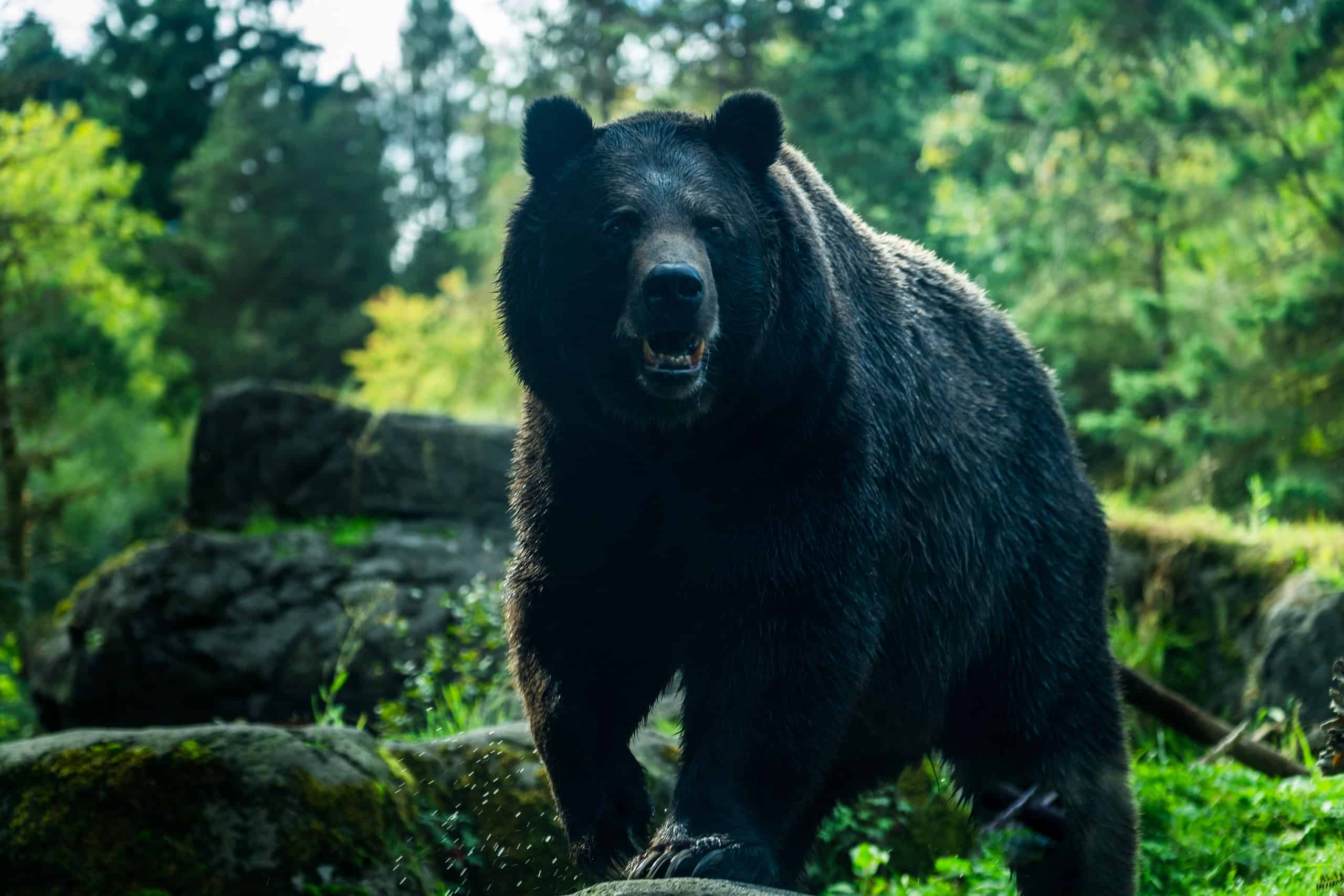Maryland is a state located in the Mid-Atlantic region of the United States. The “Old Line State” is bordered by Pennsylvania to the north, Delaware to the east, Virginia to the south, and West Virginia to the west. The state possesses a rich history dating back to its founding as an English colony in 1632. It played a significant role in the American Revolution and Civil War, and its residents have made incredible contributions to American politics, culture, and scientific discovery. Today, the state is known for its diverse economy, including industries such as technology, biotechnology, and tourism.
In terms of its flora and fauna, Maryland is home to a variety of plants and animals. The Chesapeake Bay, the largest estuary in the United States, is also located in Maryland and provides a vital habitat for a diverse array of marine life, including blue crabs, oysters, and Atlantic sturgeon. The state is also dotted with dense forests, rolling hills, and pristine beaches. These diverse habitats provide homes to an estimated 90 mammal species, 93 reptile and amphibian species, and over 400 species of birds. The black bear is one of many animals you can find in Maryland and is also the state’s largest carnivore. That said, what is the largest bear ever caught in Maryland? Keep reading to find out!

The largest
bear
ever caught in Maryland was shot in 2007 by Coty Jones near Swallow Falls in Garrett County.
©Ghost Bear/Shutterstock.com
The Largest Bear Ever Caught in Maryland
The largest bear ever caught in Maryland was shot in 2007 by Coty Jones near Swallow Falls in Garrett County. At the time, Jones (20) was a photography major at Corcoran College of Art and Design. However, when not at school, Jones liked to go hunting with her father, Philip. Jones knew her way around the woods – she learned how to shoot at eight and first went hunting at the age of ten. So, when the bear hunting season started in 2007, Jones and her father set their sights on bagging a bear. Little did they know that the Jones was about to set a Maryland state record.
On the morning of Saturday, October 21, Jones and her father set out from their home on Hoopers Island. They arrived in Swallow Falls just before dawn, and Jones settled down in a tree stand. She didn’t have to wait long before a giant male bruin entered her line of sight. The giant bear stood nearly 80 yards from where she sat, but Jones knew she could make the shot. She shouldered her 7mm-ultra mag and fired two shots, felling the bear.
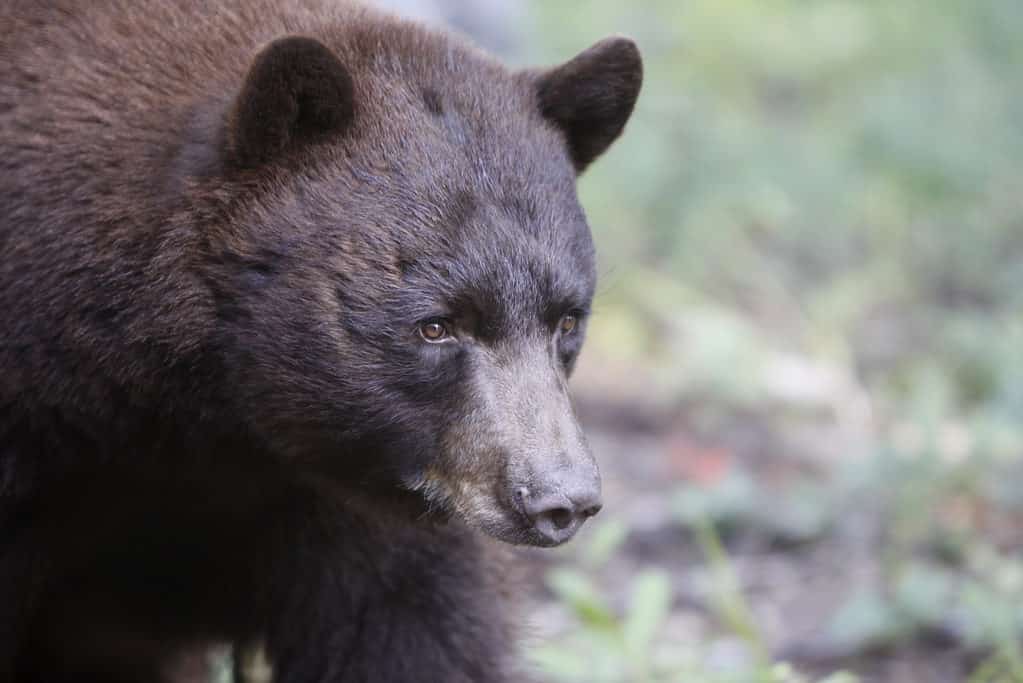
The largest black bear killed in Maryland weighed 615 pounds and stood nearly 7 feet tall.
©iStock.com/jjMiller11
When Jones and her father arrived beside the lifeless body of the bear, they could hardly believe their eyes. They knew the bear was big, but they hadn’t realized just how big. The massive bruin weighed 615 pounds and stood nearly 7 feet tall. Phillip and Jones called for some help, and it took a total of 8 men nearly 2 hours to drag the bear 500 yards to the spot where Jones had parked her pickup truck just a few hours earlier. When Jones notified the Maryland Department of Natural Resources, agents told her some good news. The bear she shot qualified as the largest bear ever recorded in Maryland. Moreover, it beat the previous record holder by 129 pounds!
Where is Swallow Falls Located on a Map?
Swallow Falls is a wooded state park with a waterfall, biking trail, picnic area, and camp sites. It is in the far northwestern corner of Maryland that is almost surrounded by West Virginia. Swallow Falls is close to the state border.
Bears in Maryland: Types and Appearance
Three different bear species call North America home: the American black bear (Ursus americanus), grizzly bear (Ursus arctos), and polar bear (Ursus maritimus). However, you cannot find grizzly bears or polar bears in Maryland. Only black bears are native to Maryland, and no records exist to suggest that grizzlies or polar bears ever lived in the state.
American black bears have a stocky build and thick, glossy fur. Although we call them “black bears,” their fur can range in color from brown to cinnamon to blonde. Additionally, a black bear’s muzzle often appears light brown, and many feature white patches on their bodies. Black bears possess short, rounded ears and a small tail around 3 to 5 inches long. Like dogs, black bears have non-retractable claws, which measure about 1.5 inches long. Adults vary in size depending on their age, sex, and time of year. Generally speaking, adult black bears weigh between 90 and 500 pounds. Males usually weigh more than females, and bears weigh heaviest in fall in preparation for winter. In terms of length, black bears measure around 3 to 5 feet long. However, when standing, they can exceed 7 feet tall.
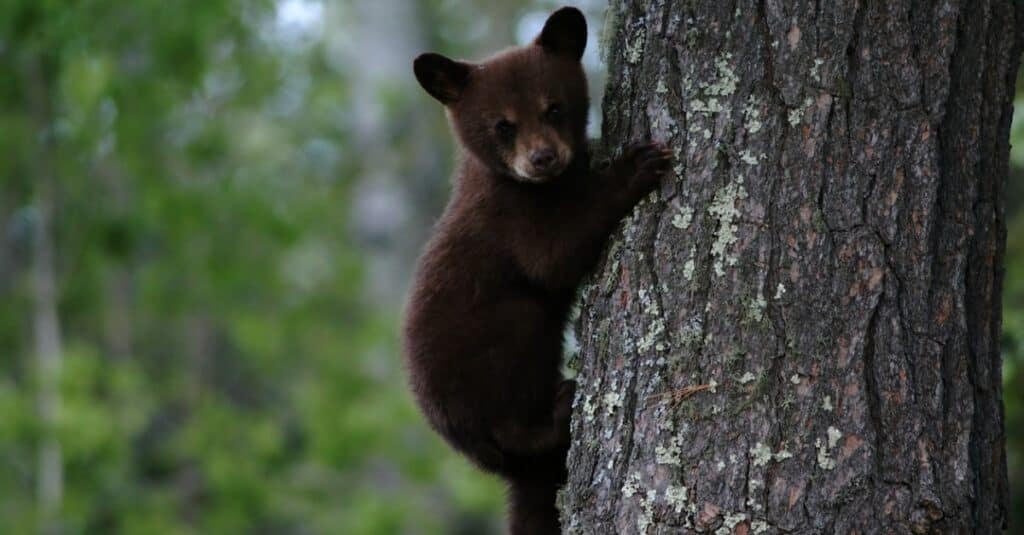
Only black bears are native to Maryland, and no records exist to suggest that grizzlies or polar bears ever lived in the state.
©iStock.com/EEI_Tony
Bears in Maryland: Habitat
Until the arrival of European settlers, American black bears used to live throughout most of North America. However, overhunting and habitat loss drove black bears out of much of their native range. Today, most American black bears live in the Pacific Northwest, Canada, Alaska, New England, and the Great Lakes Region. Black bears can survive in a wide range of habitats but occur most often in mixed forests and riparian zones. Additionally, bears that grow accustomed to humans may roam into campgrounds, backyards, or picnic areas.
Historically, you could find black bears throughout Maryland. Today, black bears are primarily confined to the western portion of the state. The western region features low mountains and old-growth forests that make great habitats for bears. You can find black bears throughout all parts of Allegany, Frederick, Garrett, and Washington counties. However, in recent years, bear sightings have increased in the eastern part of the state. Typically, these sightings occur in summer and usually involve juvenile bears. Younger bears often move into new territory as they mature, as they cannot compete with older, stronger bears for food.
How Many Bears Are There in Maryland?
Before European settlers arrived in the 1600s, bears used to live all over Maryland. At that time, the black bear population in the state likely numbered upwards of several thousand. However, a loss of habitat and overhunting drastically reduced the state’s black bear population. By the mid-20th century, few bears remained in the state. In 1972, the state listed the black bear as an endangered species. This classification granted black bears additional protections against hunting and habitat loss.
Over the next few decades, the black bear population in the state slowly recovered. Presently, experts estimate that around 2,000 black bears live in Maryland. The Maryland Department of Natural Resources monitors black bears in the state. In 2011, the department released the results of a survey conducted in Garrett and Allegany counties. These two counties contain aa some of the highest densities of bears in the state. The studies estimated that you could find around 64.5 bears per 100 square miles in those two counties. This works out to about 1 bear every 6 square miles.
Is It Legal to Hunt Bears in Maryland?
During the 1700s and 1800s, Maryland authorities actively encourage people to hunt black bears. The state’s authorities established a bounty on black bears, which led to indiscriminate killing in the state. By the mid-20th century, few bears remained in the state, and Maryland held its last bear hunting season in 1953. For the next 51 years, Maryland completely banned bear hunting in the state.
At the start of the 21st century, the bear population in Maryland had recovered to “sustainable levels.” In 2004, Maryland hosted its first sanctioned bear hunting season in over 50 years. Today, Maryland operates one bear hunting season per year, typically in late October. Maryland requires hunters to apply for a permit, which it issues via a lottery system. In 2021, 5,328 people applied for a permit, and the state issued 950 permits via the lottery. The number of bears harvested each year varies. Between 2004 and 2021, hunters harvest a total of 1,507 bears, which works out to about 83 bears per year.
Maryland does not allow you to hunt bears with dogs but does allow you to use trained tracking dogs to find a wounded or dead bear. Additionally, Maryland prohibits the use of bait, scents, or electronic calls to hunt bears. Hunters cannot kill a bear in its den and may not shoot a bear from a motorized vehicle. Bear hunting hours begin a half hour before sunrise and end a half hour after sunset.

Maryland does not allow you to hunt bears with dogs but does allow you to use trained tracking dogs to find a wounded or dead bear.
©Sebastian_Photography/Shutterstock.com
Are Bears Dangerous?
Black bears have all the physical tools needed to pose a danger to humans. Even small black bears are much stronger than the average human. A bear can break bones with a blow from its paws and possess a bite force of up to 800 psi. Bears can run over 30 miles per hour and can swim and climb much faster than most humans. That said, bear attacks happen very rarely. On average, black bears kill around 1 person per year in the United States. So long as you react appropriately, you should be able to survive a bear attack.
The best way to survive a bear encounter is to avoid them altogether. Take precautions not to attract bears to your location. This includes not feeding bears and not leaving food outdoors in unsecured containers. Consider installing bear-proof trash cans and dumpsters on your property if you live in an area with a lot of bears. Remove bird feeders and keep your trash areas free of food debris.
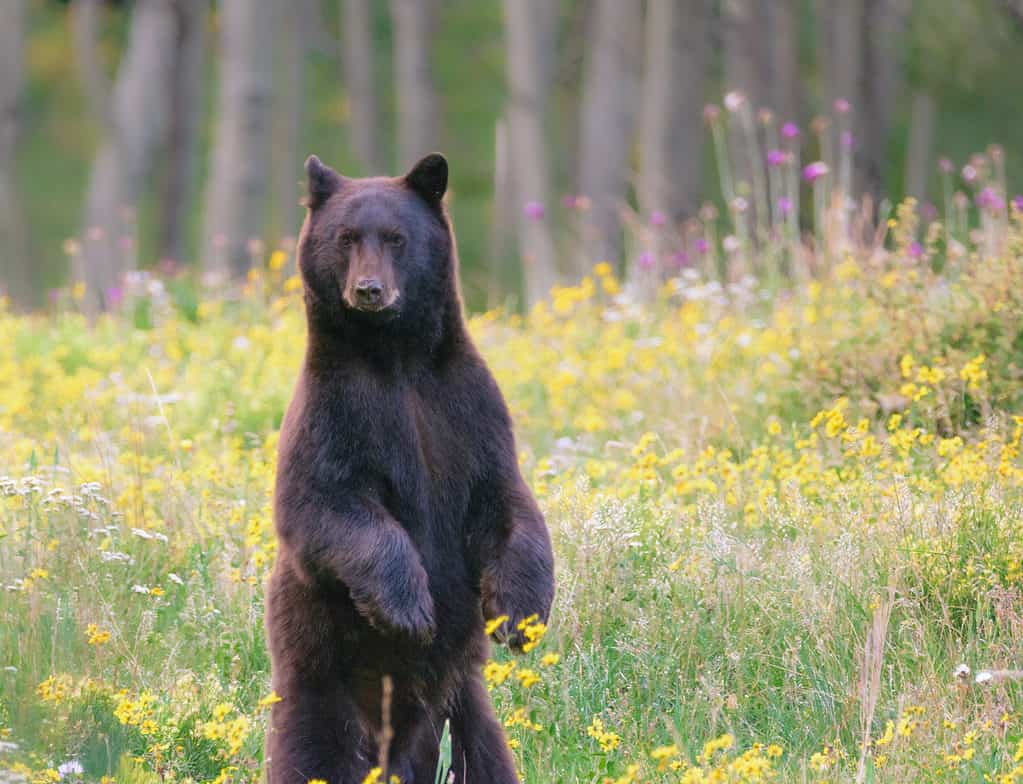
If you encounter a black bear in the wild, do not approach the bear.
©Constance Mahoney/Shutterstock.com
If you encounter a black bear in the wild, do not approach the bear. Instead, stay calm, quiet, and slowly try to back away. If the bear notices you, speak to the bear in quiet tones – this will help you (and the bear) remain calm. Try and make yourself look larger by holding your arms in the air above your head. Remember, don’t try to run from a bear – trust us, you won’t get far if the bear comes after you. Bears may try to “bluff” or scare you by roaring, false charging, or stamping the ground. Do you react to these threats; chances are the bear is giving you a chance to back away. Never imitate a bear by making bear sounds, and avoid making high-pitched sounds. This may confuse the bear into mistaking you for a competitor or a prey animal.
In the event that a bear advances upon you, yell as loud as you can to try and scare it. You can also try throwing rocks or sticks to drive it off. If that doesn’t work, and the bear attacks you, fight back with all your strength. Aim blows at the bear’s head, eyes, and nose if you can. If that doesn’t work and the bear overpowers you, you can try to play dead. Black bears are scavengers, so this may not work, but it’s worth a shot if you think your life is in danger. As an added precaution, carry bear mace or an air horn with you when you go camping or hiking. These tools can scare or drive off bears and give you the time you need to escape the area.
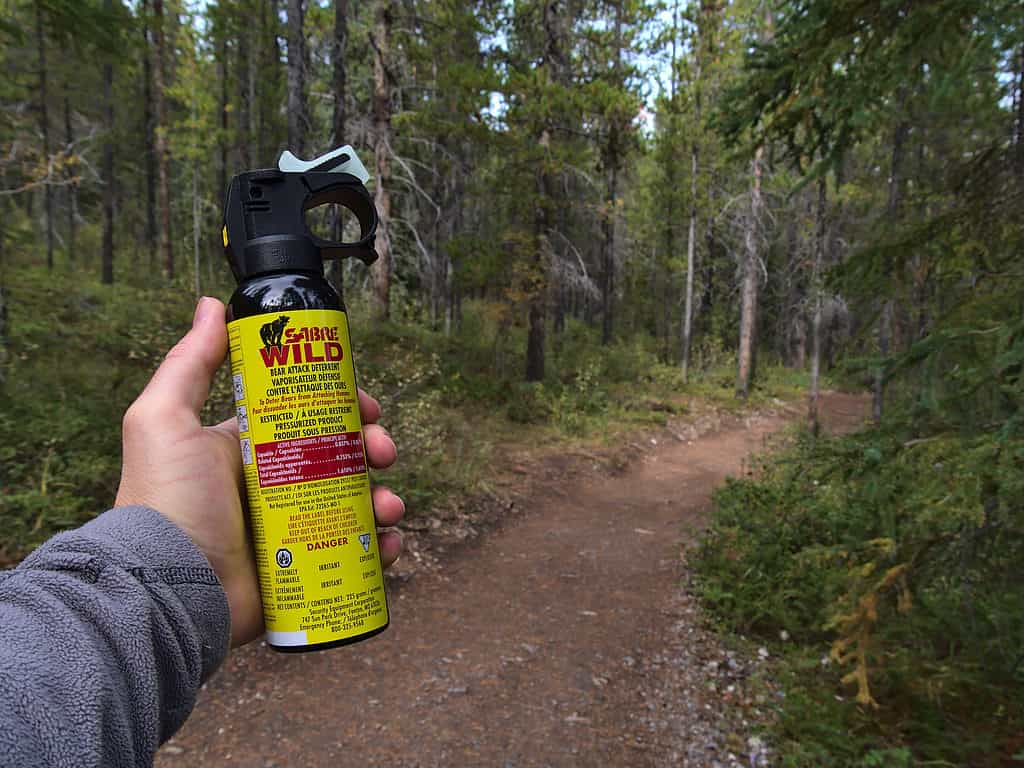
As an added precaution, carry bear mace or an air horn with you when you go camping or hiking.
©iStock.com/Timon Schneider
Conclusion
The largest bear ever caught in Maryland weighed 615 pounds. Today, you can find black bears throughout the western half of the state, but more and more people are reporting bear sightings in eastern Maryland. Around 2,000 bears live in the state at any one time, and that number rises every year. Maryland currently sanctions a bear hunting season once a year and issues permits via a lottery. Given that this system remains in place, chances are the state record for the largest bear ever caught in Maryland may change hands again sometime in the future.
Thank you for reading! Have some feedback for us? Contact the AZ Animals editorial team.

